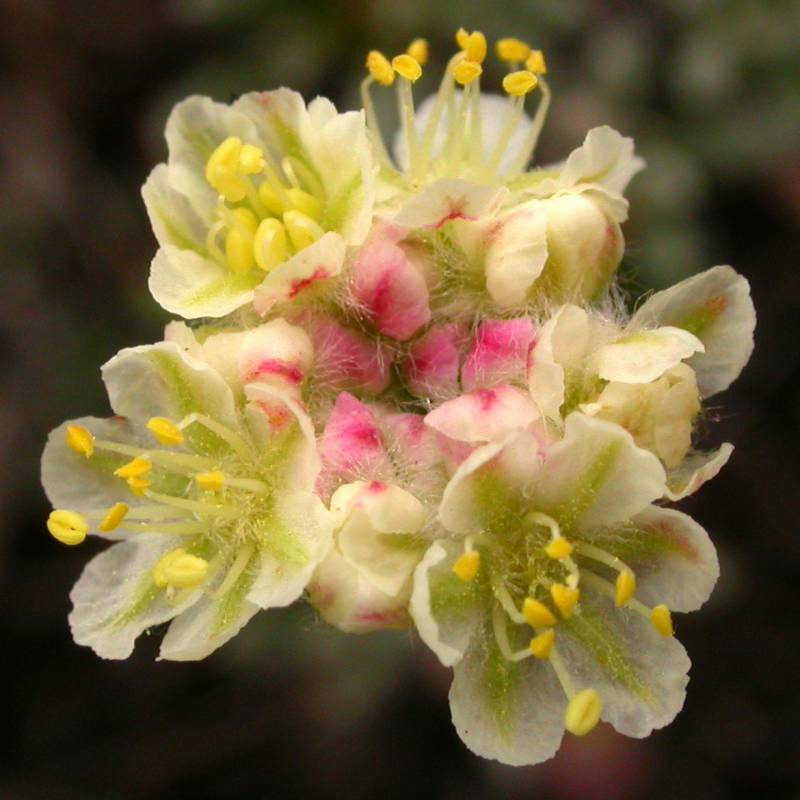|
thyme buckwheat, thyme-leaf wild buckwheat
|
rock buckwheat, round-headed eriogonum
|
| Intricately branched, low and spreading to erect shrub 5-15 cm. tall, somewhat gray-woolly to silky throughout. |
Spreading to erect sub-shrub, freely branched, forming a dense, rounded clump to 4 dm. tall. |
Leaves many, linear to linear-spatulate, 3-10 mm. long, usually revolute, somewhat wooly beneath and silky above. |
Numerous in whorls at the branch tips, broadly linear, 1-3 cm. long by 3-6 mm. wide, somewhat grayish-woolly on the underside and less so on the top |
Flowering stems 3-8 cm. tall, always with a whorl of leaves about mid-length; involucres single and terminal, top-shaped, 3-5 mm. long, the teeth 6-8, erect, triangular, 1 mm. long; perianth with a stipitate base 0.5-1 mm. long, densely hairy, the 6 segments obovate, yellow or white to rose-red, 4-6 mm. long; plants dioecious, the staminate flowers with 9 stamens, the filaments hairs only at the base, the pistillate flowers with stout, spreading styles 0.5-1 mm. long. |
Flowering stems 5-10 cm. tall, terminating in an umbel of two or more pedicels, which are subtended by several leafy bracts; the involucres are cup-shaped, with 6-10 oblong lobes about 3 mm. long, about equaling the tube, reflexed to spreading; the tepals are usually yellow, but occasionally white or pinkish, 6-8 mm. long with a stipe-like base, and forming a ball-like flower cluster. |
Achenes pubescent above |
|
|
|
|
|
| Separate from the similar Eriogonum douglasii by the involucre lobes; E. thymoides has erect lobes, E. douglasii, reflexed to spreading lobes. |
The dense, rounded clump of fine branches covered with bright yellow spheres of flowers should identify this species. |
| April-June |
May-July |
| Sagebrush deserts, dry ponderosa pine forest openings, and open ridges in lower mountains. |
Sagebrush or juniper flats to ponderosa pine forests at low elevations. |
Occurring east of the Cascades crest in central Washington; central Washington to Oregon, east to Idaho.
|
Occurring east of the Cascades crest in Washington; Washington to California, east to Idaho and Nevada.
|
| Native |
Native |
| Not of concern |
Not of concern |
E. baileyi, E. cernuum, E. codium, E. compositum, E. douglasii, E. elatum, E. flavum, E. heracleoides, E. maculatum, E. marifolium, E. microtheca, E. niveum, E. nudum, E. ovalifolium, E. pyrolifolium, E. sphaerocephalum, E. strictum, E. umbellatum, E. vimineum |
E. baileyi, E. cernuum, E. codium, E. compositum, E. douglasii, E. elatum, E. flavum, E. heracleoides, E. maculatum, E. marifolium, E. microtheca, E. niveum, E. nudum, E. ovalifolium, E. pyrolifolium, E. strictum, E. thymoides, E. umbellatum, E. vimineum |
|
|
| |



